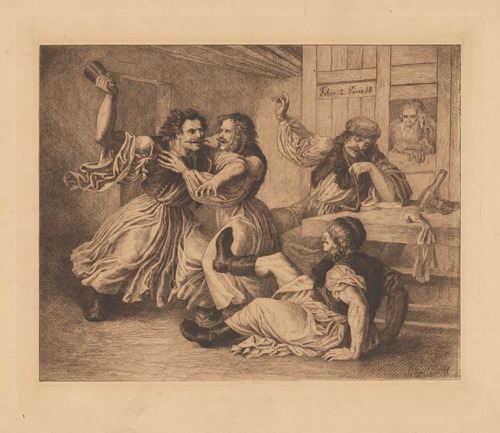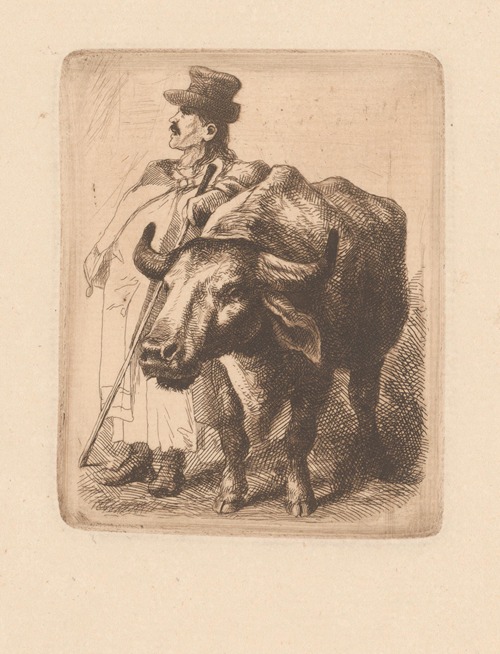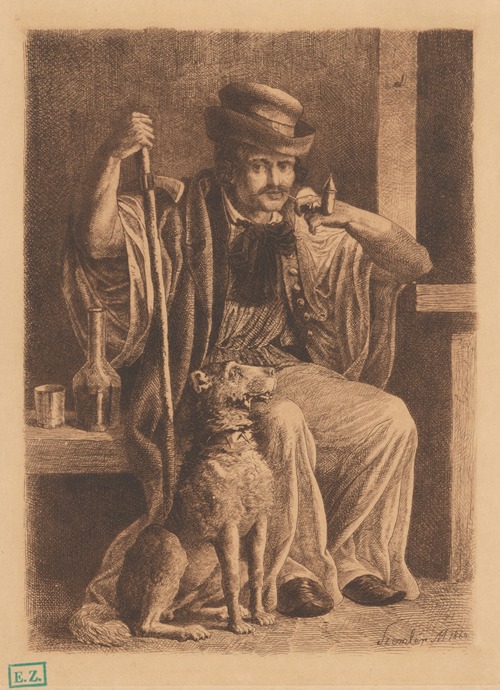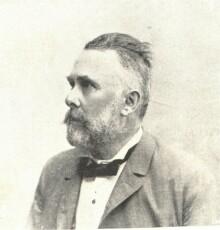





Mihály Szemlér was a Hungarian painter and graphic artist.
Born into a simple middle-class family. His father was Ignác Szemlér, his mother Terézia Pfeiffer. He was educated at the Piarist grammar school in Pest, and in 1848 he enlisted as a soldier. At the age of fifteen he fought in the War of Independence as a soldier of the 140th Battalion. In August 1849, he joined Richard Guyon's staff as a lieutenant. After the Battle of Timisoara (9 August 1849), he was captured by the Austrians near Orczyfalva and taken to Timisoara, where he was deprived of his sword and his officer's uniform and forced to work. He escaped and went into hiding, returning to Pest at the end of September, ragged, tired and starving. His mother did not recognise him at first, but offered him alms as a fugitive.
He soon gave himself to painting, enrolling in the First Hungarian Academy of Fine Arts in Pest, founded by Jakab Marastoni. In 1850 and 1851, he received first class honours and a diploma from the institute. From 1852 he continued his studies at the Academy of Fine Arts in Vienna, where he attended Ruben's historical master school for two years. After returning to Pest, he was appointed assistant teacher at the First Hungarian Academy of Painting, a post he held from 1855 to 1857. On 1 October 1858, he was appointed to the Main Real School of District IV in Pest, where he taught freehand drawing as an assistant teacher, and in 1860 he was appointed deputy teacher by the Pest City Council. At the same time, from 1859, he was a drawing teacher at the grammar school of the Order of the Most Gracious Teachers, and later worked there. From 1861 he was a full teacher at the Real School in Pest, where he taught for 32 years.
He went on study trips to Prague in 1858, and to Italy in 1864 and 1870, where he visited Venice, Florence, Rome, Milan and Naples. In Germany he visited Berlin, Munich and Nuremberg.
In 1868 he painted his great historical picture Gara defending Queen Mary from the rebel Croats, for which he spent six months in research and study. In the 1860s, he also made a number of stone paintings on historical subjects. He spent several summers with the Count Somssich family in Miken. He said of Mihály Munkácsy's painting Szemlér Biró uram: 'This is the real Hungarian type, not the one you are painting, full of Tots'.
Mihály Szemlér was a landscape painter from the 1880s, and most of his paintings were done in Sada. He also made illustrations for several publications (Vilmos Radó in 1883, Pál Gyulai in 1889, Ignác Halász in 1897 and 1899). He also made etchings and etchings, and with Mór Than, Bertalan Székely, Károlly Telepy, Újházi, Soma Orlai and Károlly Jakobey (1873) he also drew illustrative wall pictures for schools.
He also painted landscapes and scenes and wrote several treatises on the method of teaching drawing.
He retired in 1890, but took a lively part in the organisation of the Millennium Exhibition as group commissioner of Group XV. He died of a stroke on 28 February 1904.
His works were the subject of a bequest exhibition at the National Salon in 1904. Several of his works are in the Hungarian National Gallery.



